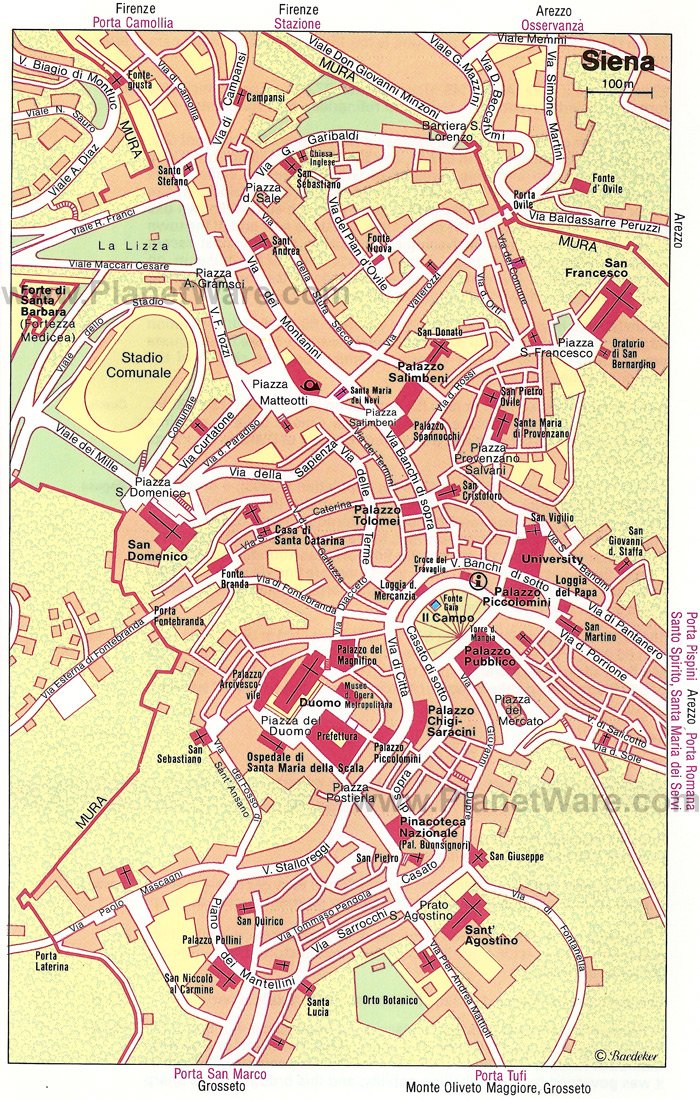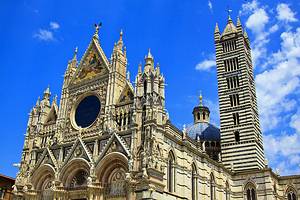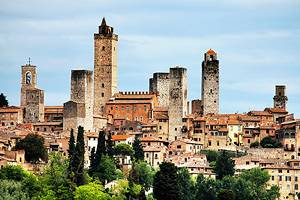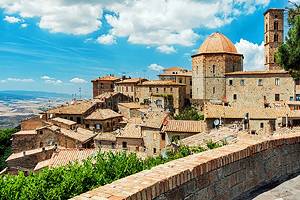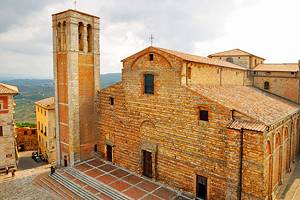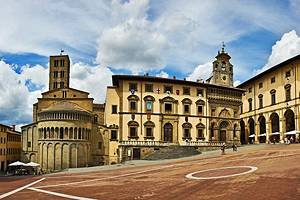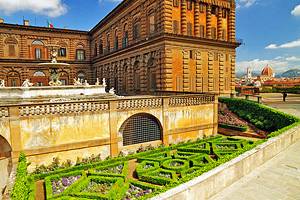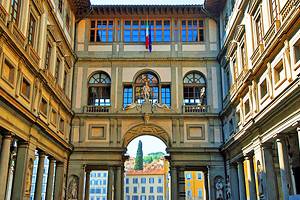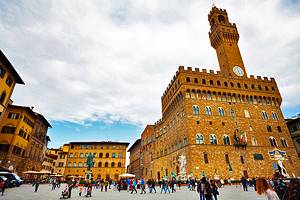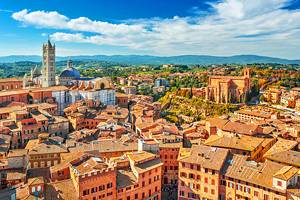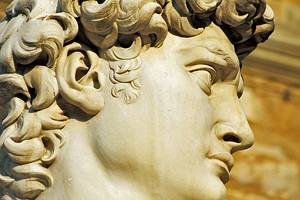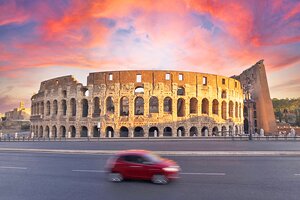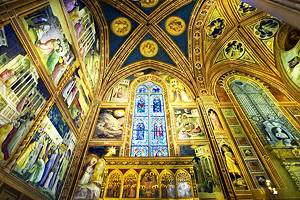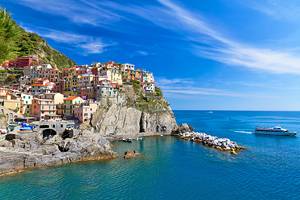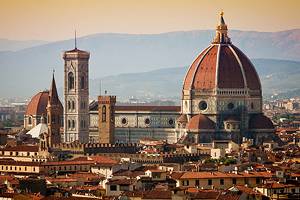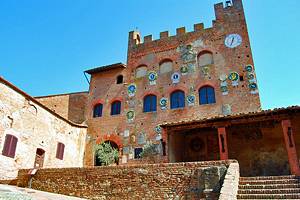Tourist Attractions in Siena
Siena lies in the picturesque Tuscan hills south of Florence, which was throughout much of the city's history its chief competitor for wealth and power. Siena began to prosper in the 12th century and reached its artistic zenith in the 13th and 14th centuries, when its artists rivaled those of Florence.
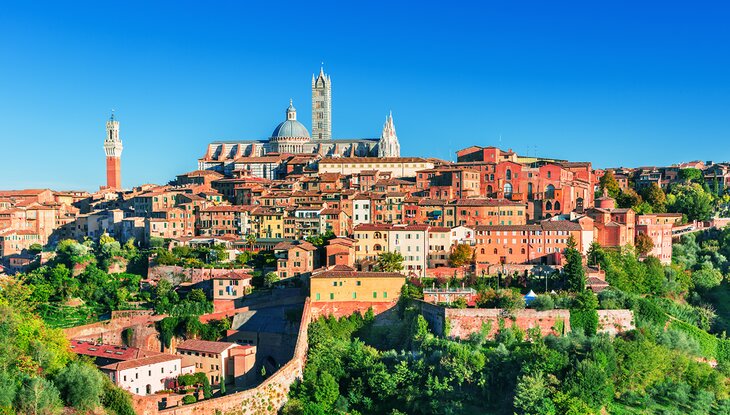
The top attractions date from this period of artistic and architectural achievement. The cathedral and palaces of Siena, most of them built of brick made from the local red clay, are outstanding monuments of Gothic architecture. As you explore the many tourist attractions in Siena's beautiful Centro Storico, the historic old town, be prepared to do a lot of walking, most of it uphill — or so it may seem.
For all its artistic splendor, Siena is perhaps best known to the world as the home of the Palio, a mad-cap horse race that takes place here twice each summer. But Siena has a lot more to offer, and walking through its romantic stone-paved streets, where no motor vehicles are permitted, you can easily feel as though you've stepped back into medieval Italy.
To find the best places to visit and things to do, use this handy list of the top attractions in Siena.
Cathedral of Santa Maria Assunta
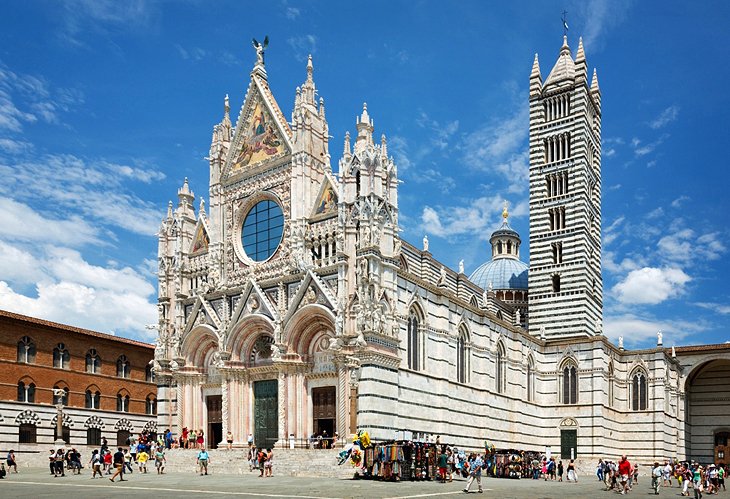
Always listed as one of Italy's premier examples of Gothic architecture, Siena's Cathedral of Santa Maria Assunta owes its dramatic first impression to the genius of Giovanni Pisano, who designed its façade and sculpted most of the statues and reliefs that adorn it.
The alternating stripes of dark and light marble that cover most of the church and its tall campanile contrast not only with each other but with the predominating red brick of the rest of Siena's buildings.
The Cathedral of Santa Maria Assunta has more masterpieces and art treasures than many prestigious museums, or in fact, many entire cities, with multiple works by both Nicola and Giovanni Pisano, Donatello, Bernini, Lorenzo Ghiberti, Pinturicchio, Iácopo della Quercia, Giovanni di Turino, Vecchietta, and others.
The works that decorate the walls, ceilings, and floors, and fill the chapels, crypt, library, and museum constitute one of Italy's outstanding assemblies of frescoes, sculptures, stone and wood carving, paintings, gold and silver work, illuminated manuscripts, mosaics, and stained glass art.
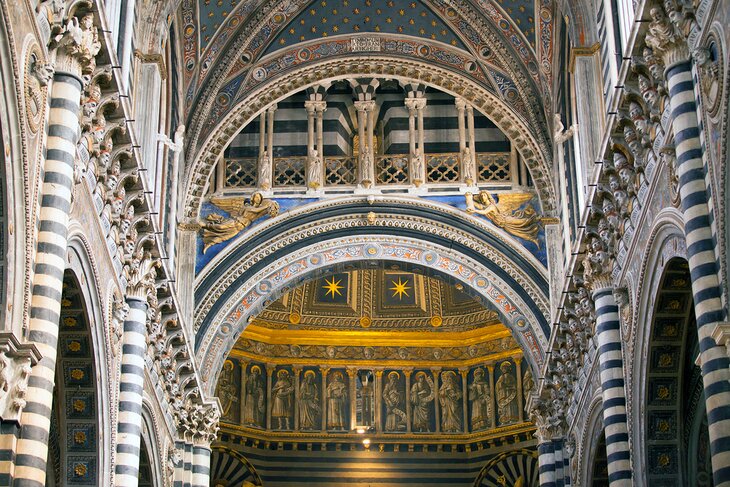
Highlights of this immense complex are the richly frescoed Biblioteca Piccolomini, the bronze reliefs by Ghiberti and Donatello in the Baptistery of San Giovanni, the 13th-century carved marble pulpit by Nicola Pisano, and the stunningly detailed floor of inlaid marble in the nave.
If after seeing all these you are not on sensory overload, three more places round out the massive complex. The Museo dell'Opera del Duomo is filled with art and cathedral treasures, and it's where you can see the cathedral's original round stained-glass window.
The Crypt, discovered in the 1990s during renovations, has 13th-century wall paintings; reach it through a separate entrance opposite the museum.
The Porta del Cielo (gateway to the sky) is not included in your admission ticket, but worth paying extra for the view of the cathedral nave from high above.
The Opa Si Pass for admission to the Duomo includes everything except the Porta del Cielo, and is good for three days. Because the complex is so big and has so many different things to see, it's better to spread your visits over two or three days if you can.
Address: Piazza del Duomo 8, Siena
Piazza del Campo
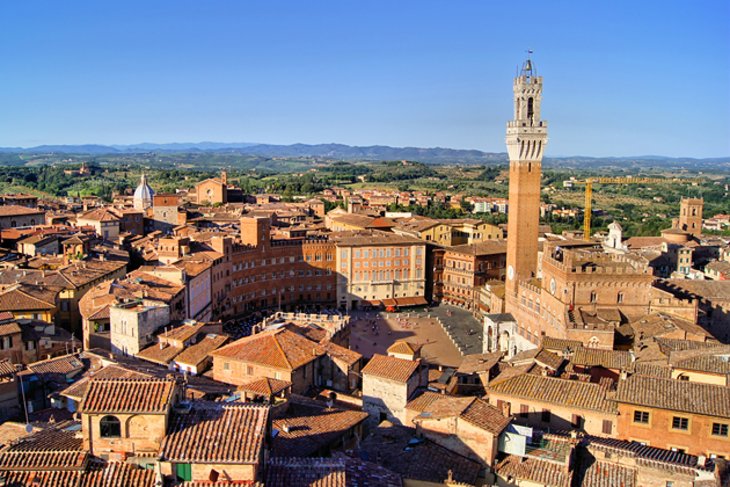
The central feature of Siena's old town, the wide expanse of Piazza del Campo is surrounded by the curving facades of palaces and dominated by the elegant Palazzo Púbblico (Town Hall) and its tall, graceful tower. Its unity and harmony make it one of Italy's finest city squares.
At the upper end of the sloping square is the Fonte Gaia, a richly carved rectangular fountain basin by Iácopo della Quercia. Created in 1419, della Quercia's masterpiece was restored in 1868, and his original marble reliefs were removed to protect them. Those you see today are exact reproductions, but you can see the originals on display in the Museo Civico.
The harmonious effect of the Piazza del Campo is largely because the houses opposite the Palazzo Púbblico are in a similar style to the palazzo. Particularly striking is the Palazzo Sansedoni, built from 1216 to 1339, to the right of the Fonte Gaia.
Palazzo Pubblico and Museo Civico
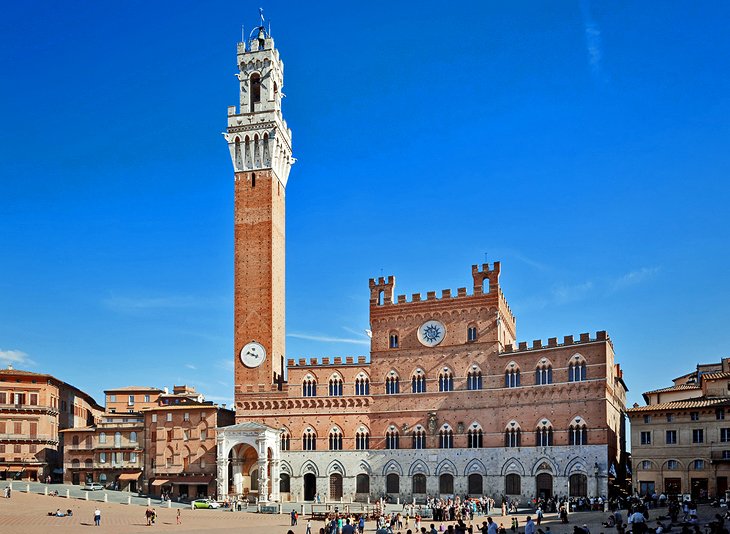
Forming almost an entire side of Piazza del Campo, the Gothic town hall was built in the late 13th and early 14th centuries. The travertine and brick facade is relieved by rows of elegant windows and cornices of round-headed arches and topped by battlements.
The black and white escutcheon of Siena, known as the Balzana, is repeated in the arches over the windows. Under its battlemented top is a roundel with Christ's monogram (IHS), in recognition of San Bernardino of Siena (1380-1444), who preached in the Piazza del Campo. In the center of the first floor is the coat of arms of the Médici, who ruled over Siena in the 16th century as Grand Dukes of Tuscany.
The interior of the Palazzo Púbblico is remarkably well preserved, with frescoes of the Sienese school that provide an insight into the minds of the proud burgher families of 14th- and 15th-century Siena. In the Sala della Pace, frescoes by Ambrogio Lorenzetti depict Good Government and Bad Government with views of Siena.
In the Sala del Mappamondo is a magnificent fresco entitled, Maestà, by Simone Martini. Adjoining this room is the chapel with frescoes by Taddeo di Bártolo. The upper floors house the Museo Civico, with drawings, paintings, and other documents of the history of the town, Renaissance paintings, and examples of Renaissance and Baroque silverwork. On an upper loggia, you'll find the original sculpture from the Fonte Gaia.
Address: Piazza del Campo 1, Siena
Torre del Mangia
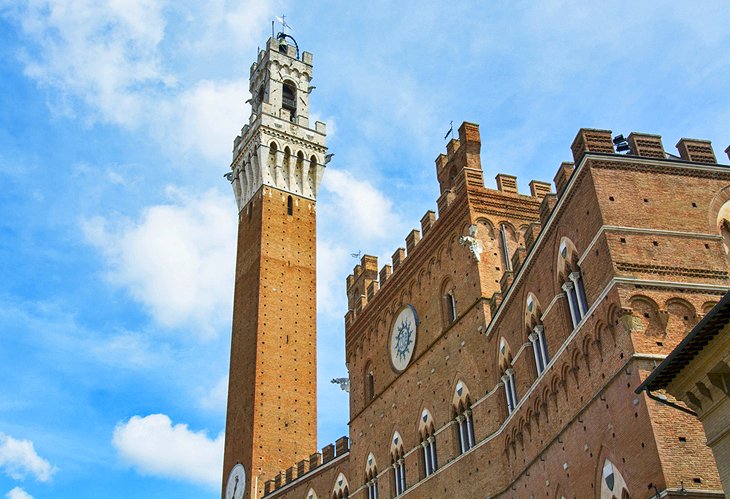
At one end of the Palazzo Pubblico stands the slender 102-meter Torre del Mangia, one of the most daringly conceived of medieval towers. The narrow brick shaft rises to a battlemented platform with supporting brackets and a superstructure of travertine. It was built between 1338 and 1348 by two brothers, Minuccio and Francesco di Rinaldo.
You can climb the several hundred steps to the platform for sweeping views of the city and Tuscan hills. The Renaissance-style Cappella di Piazza at the foot of the tower was built in 1352 in thanks for the town's deliverance from the 1348 plague.
Tip: Book tickets for climbing the tower (about 500 steps in all) early in the day and choose a time slot in the late afternoon, when the light is at its most magical.
Address: Piazza del Campo, Siena
Il Palio (Horse Race)
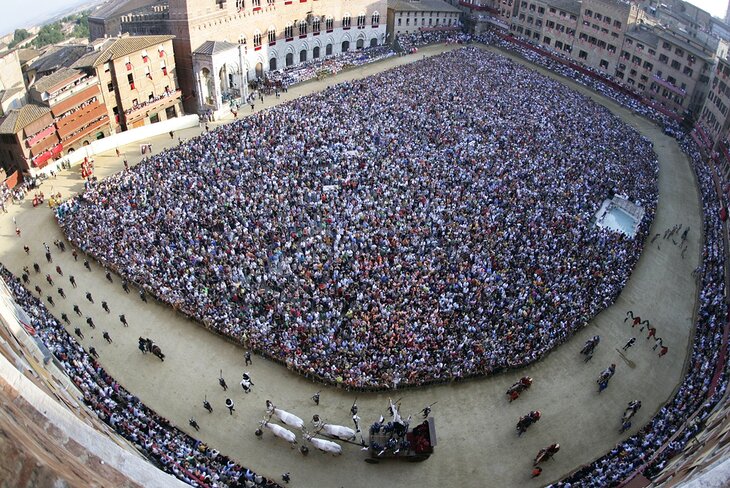
Even if you are not in Siena on July 2 or August 16, the dates of each summer's two Palio races, you're sure to run across some mention or sign of it. Banners and souvenirs picturing the mascots of the various contradi — the competing neighborhood associations — are in every souvenir shop, and you may see them on houses or in front of contrada clubhouses.
On Palio days, the race itself takes place in the Piazza del Campo, as 10 horses and their bareback riders, compete for the pallium, a silk prize banner. The jockeys don't have to be on the horse at the finish line; the prize is for the horse that crosses it first.
Adding to the day's excitement — more like pandemonium — are parades of costumed bands, demonstrations of flag throwing, even fully armored knights riding through the narrow streets on horseback, a reminder that this race began in the 1500s.
Pinacoteca Nazionale (National Gallery)
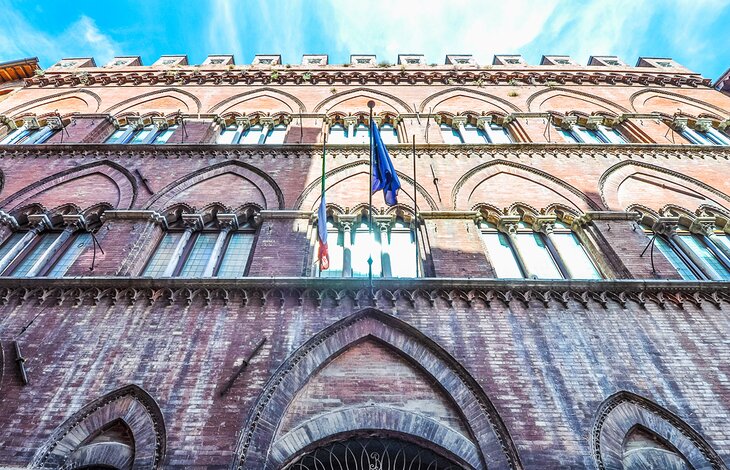
The Pinacoteca Nazionale occupies one of the most elegant palazzi in Siena, the battlemented Late Gothic Palazzo Buonsignori, built in the early 15th century. The gallery offers an excellent overview of Sienese painting from the 12th to the 16th centuries, with pictures by almost all the painters working in Siena.
Most notable are the 13th-century Raising of Lazarus and Entry into Jerusalem by Guido da Siena, Duccio di Buoninsegna's Virgin and Child and Madonna dei Francescani, Ambrogio Lorenzetti's 14th-century Madonna Enthroned and Annunciation, Pietro Lorenzetti's John the Baptist and Allegory of Sin and Salvation, and Holy Family by Pinturicchio. Look for the marble inlay cartoons by Beccafumi on the floor of the cathedral.
Address: Via San Pietro 29, Siena
The Facciatone
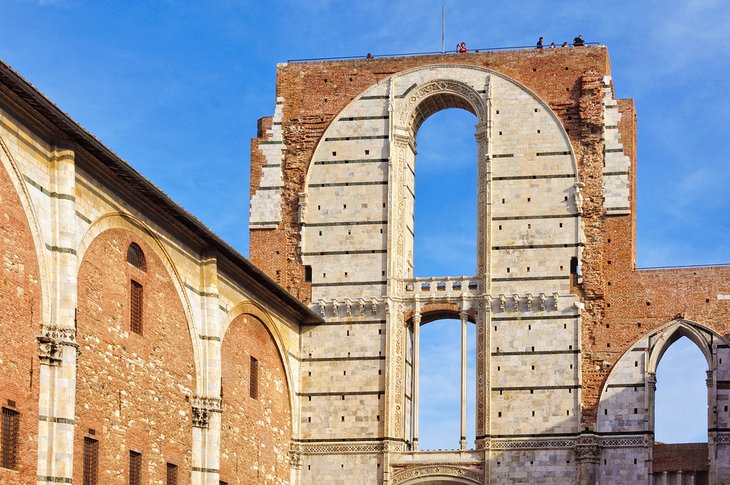
One of the most unusual things to do in Siena is to climb to the top of the Facciatone, the unfinished façade of the cathedral that was never built. In the middle of the 14th century, the people of Siena planned and began work on an expansion to create a new nave, 100 meters long, leaving the original nave (the one you see now) as a transept of this gigantic church.
But construction slowed with the onset of the plague and the resulting economic recession, finally grinding to a halt with the discovery of stability problems with the portions already completed. Eventually, plans were abandoned, leaving only the incomplete facade, and wonderful views of Siena.
The climb to the top, up a narrow circular stairway, and the dizzying experience on the platform at the top are not for those without a good head for heights, but the view of the cathedral and the Siena and Tuscan countryside is incomparable.
San Doménico
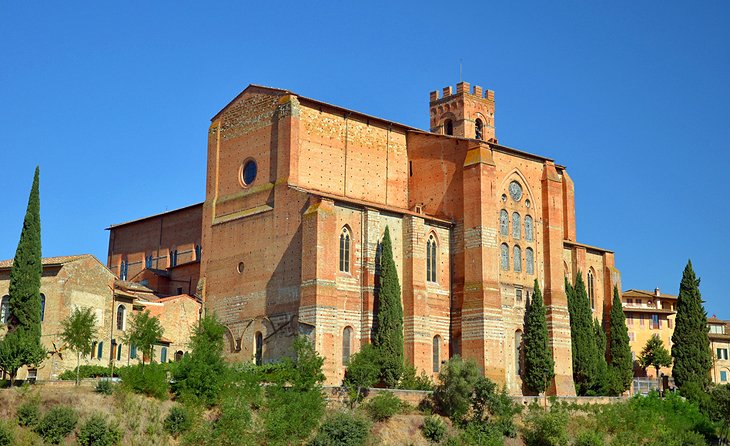
The Church of San Doménico, a severe brick building in Cistercian Gothic style was originally built in 1226 but has been altered and enlarged; the battlemented campanile, in a style quite alien to Cistercian architecture, was erected in 1340. The nave has no aisles, an enclosed rectangular choir, and a surprisingly high and spacious transept opening onto a pair of chapels flanking the choir.
The lack of decoration enhances the impression of space. A vaulted chapel off the nave has the earliest known likeness of St. Catherine of Siena, a fresco by Andrea Vanni painted about 1400.
The Cappella di Santa Caterina, on the right wall of the nave, contains two 1525 masterpieces by Sodoma, The Ecstasy of St. Catherine and St. Catherine Fainting, and a 1446 marble tabernacle by Giovanni di Stéfano with the head of the Saint, who died and was buried in the Church of Santa Maria sopra Minerva in Rome.
On the high altar are two angels holding a candelabra, by Benedetto da Maiano. Frescoes and wall paintings by Matteo di Giovanni are in the side chapels off the choir. Below the apse of San Doménico is the Fonte Branda, a fountain mentioned in records as early as 1081.
Address: Piazza San Domenico, Siena
San Francesco
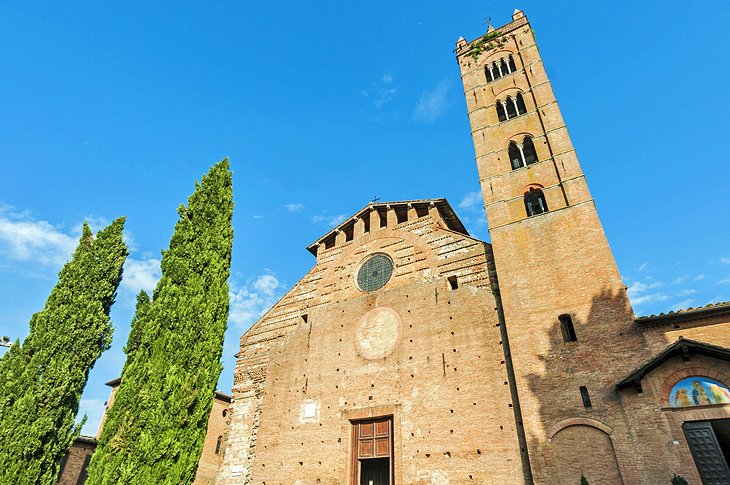
The Gothic Church of San Francesco was begun by the Franciscan order in 1326 but not completed until 1475. Like San Doménico, San Francesco shows the architectural style of the Mendicant Orders, with an aisleless nave and no apse at the east end. And also like San Doménico, its campanile was added much later, in 1765.
The interior, with its open timber roof, is painted in alternate bands of black and white that will remind you of the marble facing of the cathedral and is enlivened by banners of the old craft guilds.
In the left transept are a magnificent fresco of the Crucifixion, painted about 1330 by Pietro Lorenzetti, and frescoes of St. Louis of Toulouse and the Martyrdom of Franciscans at Ceuta by Ambrogio Lorenzetti.
Address: Piazza San Francesco, Siena
Santa Maria della Scala (Santíssima Annunziata)
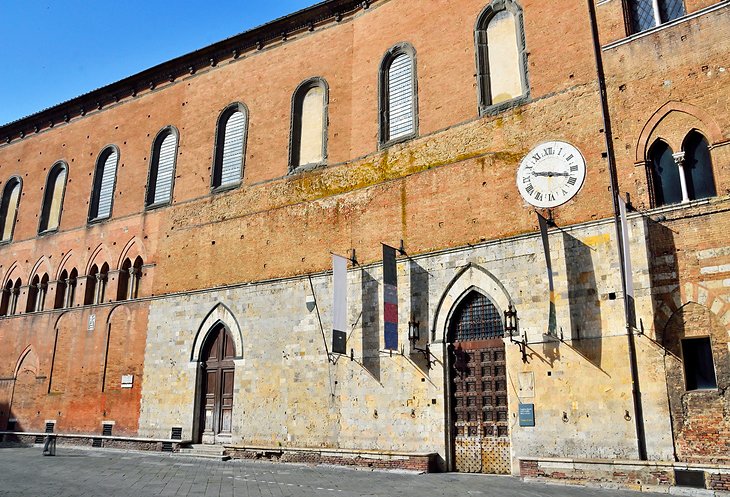
Adjoining the Ospedale di Santa Maria della Scala, opposite the cathedral, the Church of the Santíssima Annunziata is better known as Santa Maria della Scala. Built at the end of the 13th century, it was radically rebuilt in the late 15th century by Francesco di Giorgio Martini, with the decoration of the apse and the coffered ceiling.
In 1730, the large fresco that fills the apse was painted by Sebastiano Conca, picturing the sick awaiting miraculous healing at the Pool of Bethesda, appropriate to the church's mission as part of a hospital. On the high altar is an outstanding bronze Risen Christ by Lorenzo Vecchietta, dated and signed by the artist in 1476, a masterpiece of Renaissance sculpture often compared to the works of Donatello.
The hospital, which is open as a museum, also has some major frescoes. It was one of Europe's first hospitals and is one of the world's oldest still surviving.
Address: Piazza del Duomo 2, Siena
Santuario di Santa Caterina
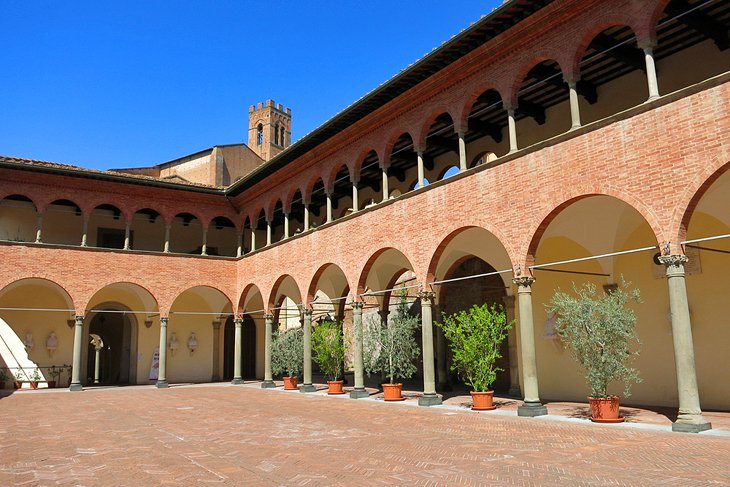
Throughout the city's churches and elsewhere, you'll find references to St. Catherine of Siena, one of the Roman Catholic church's most beloved saints. The daughter of a Siena dyer named Benincasa, Catherine prevailed on Pope Gregory XI to return from Avignon to Rome in 1377.
The best known of her visions was her "mystic marriage" to the Infant Christ, a favorite theme with painters. The earliest known likeness of her is in a fresco by Andrea Vanni in the Church of San Doménico, painted about 1400, only 20 years after her death. Her girlhood home is now revered as the Sanctuary of St. Catherine. Its fine Renaissance doorway has the Latin inscription "Sponsae Kristi Catherinae Domus" (House of Catherine, Bride of Christ).
Address: Via Santa Caterina, Siena
Santa Maria degli Servi
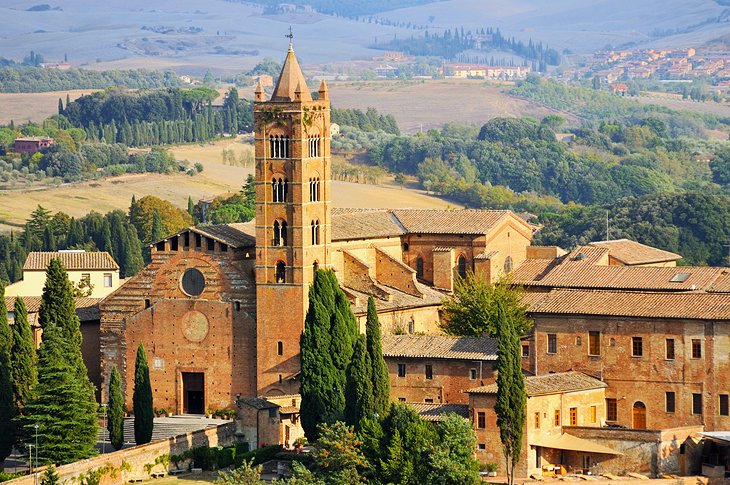
At the southeast end of the old town, the Church of Santa Maria degli Servi was originally built in the 13th century but was altered in the 15th and 16th centuries in the style of the period. The plain facade was left unfinished; the Romanesque campanile, like that of the cathedral, has four layers of windows, increasing in number with each level to make it look tapered at the top.
Notable artworks inside are the 1261 Madonna del Bordone by Coppo di Marcovaldo and the famous 14th-century fresco, Slaughter of the Innocents, by Pietro Lorenzetti in the second chapel in the south transept. On the altar is Lippo Memmi's Madonna del Pópolo, from about 1317. Not far from the church is the imposing Porta Romana, a 1327 gate in the old town walls.
Oratorio di San Bernardino
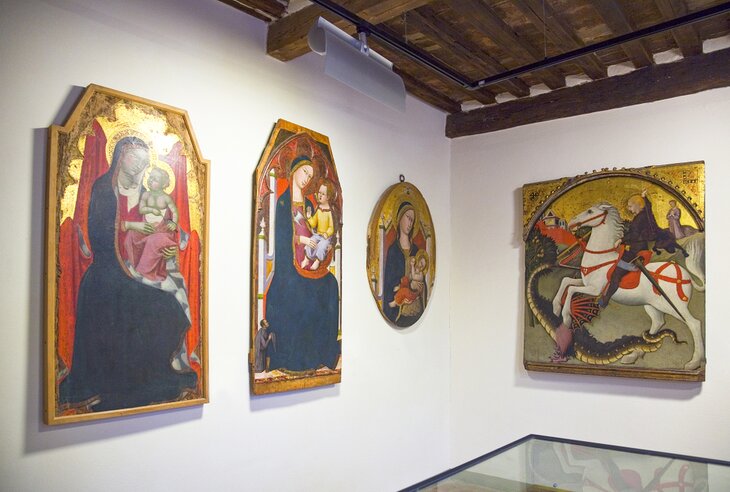
Next to the Basilica di San Francesco, about a 10-minute walk from the Duomo and included with the Duomo and several other churches in the Acropoli passes, the Oratorio di San Bernardino was built in the 15th century on the spot where the Franciscan friar San Bernardino of Siena often preached.
On the ground floor are paintings dating from the 13th to the 19th century from other churches in the Siena diocese, part of the Diocesan Museum. The vaulted ceiling, frescoed to represent a star-studded blue sky, dates from the 16th century.
More priceless religious paintings are on the upper floor, by artists such as Sano di Pietro, Pietro Lorenzetti, and Jacopo della Quercia. But the highlight is the chapel, whose walls are covered in magnificent 16th-century frescoes by Sodoma, Doménico Beccafumi, and Girólamo del Pacchia, showing scenes from the life of the Virgin and various saints.
Address: Piazza San Francesco, Siena
Palazzo Salimbeni

The facades of three palaces surround Piazza Salimbeni, with the 14th-century Gothic Palazzo Salimbeni in the center. The square itself used to be the palace's garden, but in the mid-1800s, the piazza was created and Palazzo Salimbeni was updated to the then-popular Neo-Gothic style.
The Palazzo Salimbeni is now occupied by the head offices of one of Italy's oldest banks, the Monte dei Paschi di Siena founded in 1472. Its art collections are rarely open to the public.
To the right of the Palazzo Salimbeni is the Palazzo Spannocchi, built by architect Giuliano da Maiano for Ambrogio Spannocchi, Treasurer to Pope Pius II. In front of this elegant Renaissance building are loggias added in 1880 by Giuseppe Partini, who created the square and renovated the Palazzo Salimbeni.
Address: Piazza Salimbeni, Siena
Map of Tourist Attractions in Siena
More Related Articles on PlanetWare.com
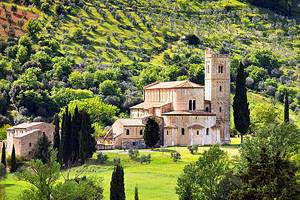
Places to Visit near Siena: Because of its location in the heart of Tuscany, you can take several easy day trips from Siena. The town of Arezzo is not far to the east, as is the ancient Etruscan center of Cortona. And the Tuscan countryside near Siena is beautiful for drives, walks, or bicycling.
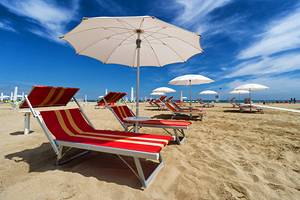
Where to Go from Siena: Heading east beyond Arezzo are the mountaintop principality of San Marino and the former Roman outpost of Rimini, on the Adriatic Sea, a coast lined with some of Italy's most popular beaches. Rimini has several Roman sites to visit, and the lively beaches always have lots of things to do for families with children.
